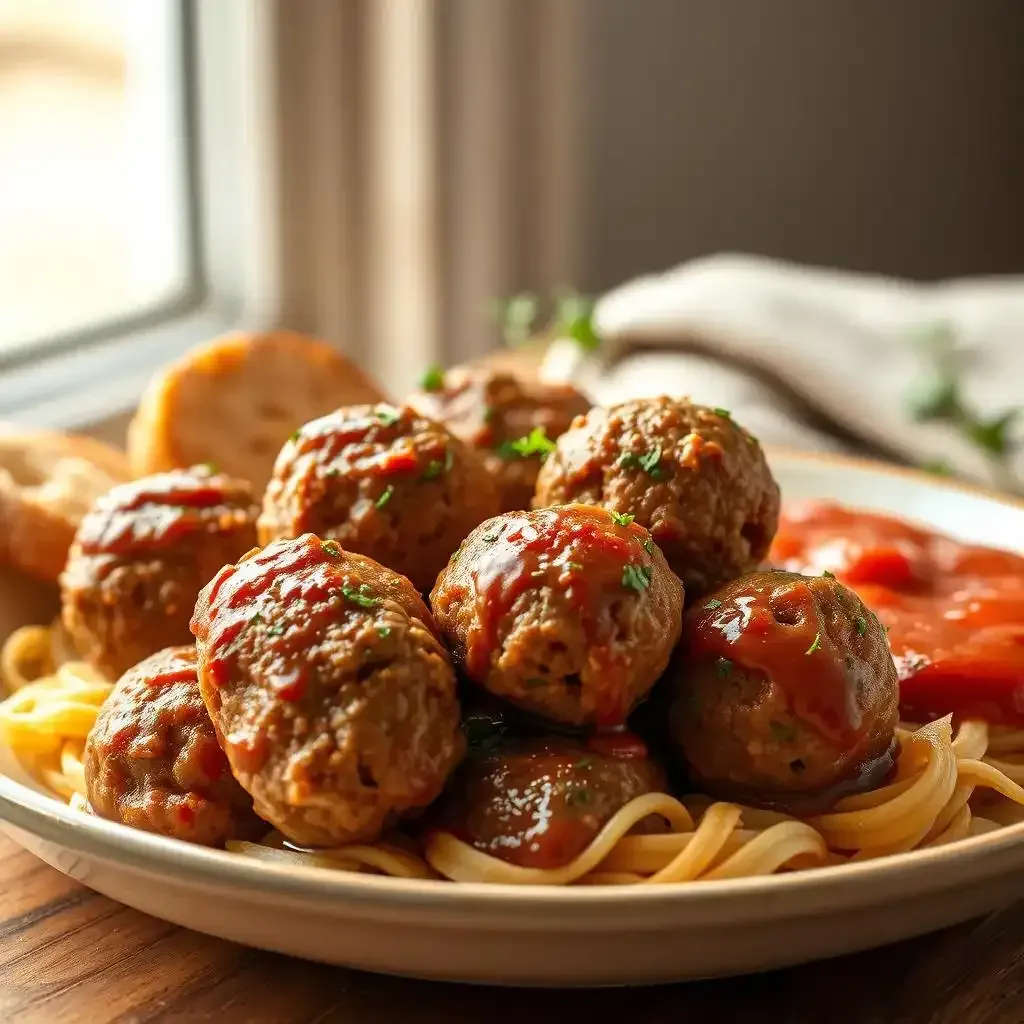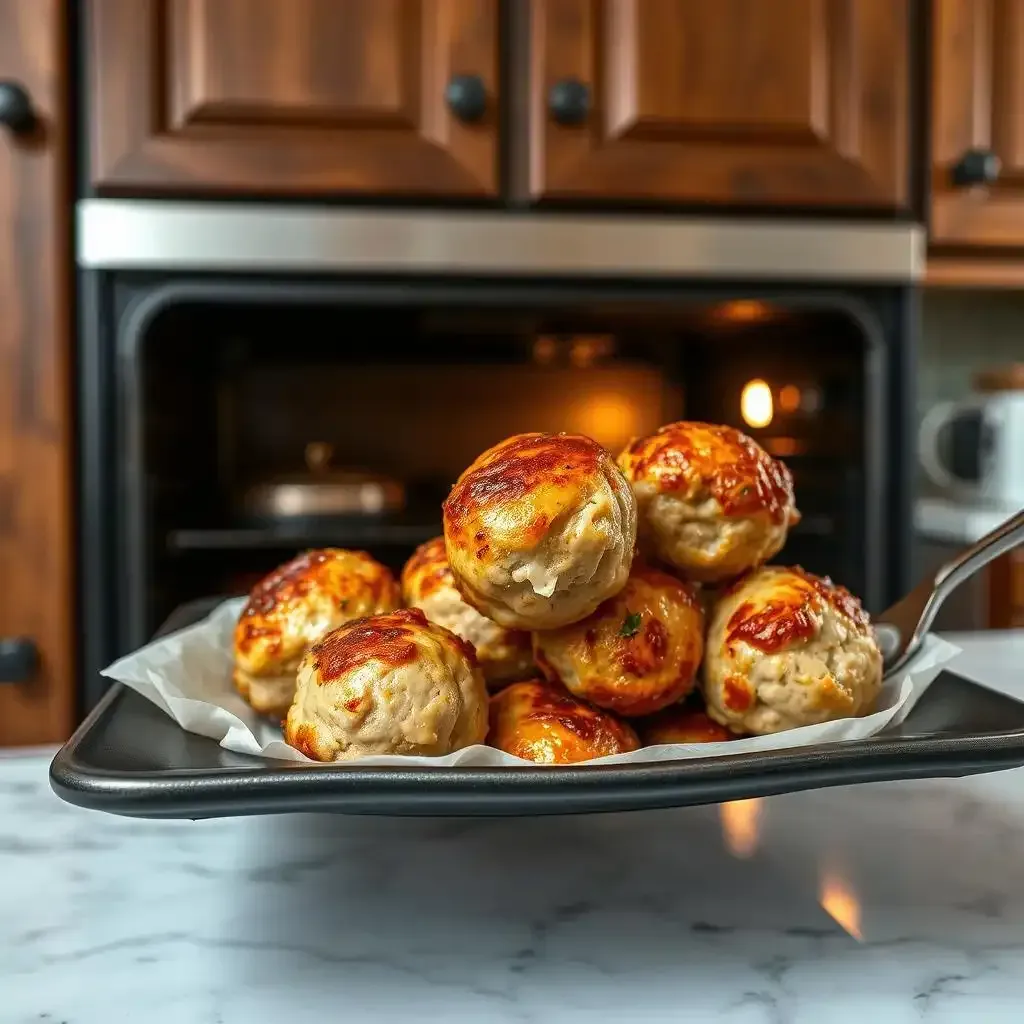Are you ready to make the most amazing meatballs you've ever tasted? At meatballrecipeskitchen.com, we believe that the key to truly delicious meatballs lies in choosing the right ground turkey. Forget dry, crumbly disappointments – we're about to unveil the secrets to juicy, flavorful perfection. This article will guide you through the world of ground turkey, helping you understand the nuances of fat content, grind texture, and meat type to ensure your meatballs are a culinary triumph. We'll explore different types of ground turkey, discuss which ones are ideal for creating tender, flavorful meatballs, and even offer some recipe inspiration to get your creative juices flowing. Get ready to raise your meatball game! Prepare to uncover the best ground turkey for meatballs and transform your next dinner into a memorable experience. So, let's explore in and find the perfect ground turkey for your next meatball masterpiece!
Best Ground Turkey for Juicy Meatballs: A Comprehensive Guide
Understanding Fat Content: The Juiciness Factor
Hey there, fellow meatball enthusiasts! Let's talk about the juicy heart of a perfect meatball: fat. Now, I know what you're thinking – "Fat? Isn't that bad?" Not necessarily! Think of fat as the secret ingredient that keeps your meatballs moist and tender, preventing them from turning into dry, sad little hockey pucks. A leaner ground turkey (like 93% lean) will work, but it might need a little extra help to stay plump. If you're aiming for maximum juiciness, a slightly fattier option (around 85% lean) is your best bet. It's all about balance; you want enough fat to keep things juicy, but not so much that your meatballs become greasy. It's a delicate dance, my friend!
Imagine this: you bite into a meatball, and instead of a burst of flavor, you get a mouthful of dry, crumbly disappointment. Ouch! That’s why understanding fat content is so important! For a really moist meatball, think of the fat as a natural moisturizer. It's like adding a little bit of lotion to your skin – it keeps things supple and prevents dryness. Check out our best turkey meatballs recipe for a perfect example.
Ground Turkey Type | Fat Content (%) | Juiciness Level |
|---|---|---|
93% Lean | 7% | Moderate |
85% Lean | 15% | High |
Ground Turkey Breast | Very Low | Low |
The Grind: Coarse is King (or Queen!)
Next up, we have the grind. Now, you might think it doesn't matter, but trust me, it does! A coarser grind means larger pieces of turkey, which results in a more interesting texture. It's like comparing chunky peanut butter to smooth – chunky peanut butter has a much better bite and more character, right? A fine grind, on the other hand, can make your meatballs dense and compact, which can result in a less-than-stellar outcome. So, when you're at the grocery store, look for ground turkey with a little bit of texture to it.
Think of it like this: a coarse grind holds onto moisture better. It creates more surface area for the flavors to cling to. It's like having a sponge versus a smooth rock. The sponge (coarse grind) absorbs more liquid (flavor and moisture), making your meatballs more flavorful and juicy. For some ideas, check out our ground turkey meatballs page. I've got some great recipes there!
- Coarse Grind: Better texture, holds moisture better
- Fine Grind: Denser, can be dry
- Mix of Dark and White Meat: More flavor and moisture
Meat Type Matters: Dark and White Meat Harmony
Finally, let's talk about the actual meat. A blend of dark and white meat is your best bet for flavor and moisture. Dark meat is richer and more flavorful, while white meat is leaner. Combining them creates a delicious and well-balanced meatball that's both juicy and full of flavor. It's like a perfect marriage of flavors!
Using only white meat will result in dry meatballs, while using only dark meat might make them a bit too rich. Think of it like a symphony orchestra – you need a variety of instruments to create a beautiful and complete piece of music. Similarly, you need a blend of dark and white meat to create a perfect meatball. For more inspiration, check out our turkey meatballs recipe page. I've included some tips and tricks there.
Understanding Ground Turkey: Fat Content, Grind, and Meat Type

Understanding Ground Turkey Fat Content Grind And Meat Type
Fat Content: The Juicy Truth
Okay, let's talk turkey – specifically, the *fat* in your ground turkey. I know, I know, "fat" is a scary word, but hear me out. Think of it this way: fat is like the secret sauce that keeps your meatballs juicy and delicious. It's the difference between a meatball that explodes with flavor and one that's dry and sad. Now, you can totally use lean ground turkey (like 93% lean), but it's gonna need some extra love to stay moist. If you're aiming for a seriously juicy meatball, go for something a little fattier (around 85% lean). It's all about finding that sweet spot. Too much fat, and your meatballs will be greasy; too little, and they'll be dry. It’s a balancing act!
I remember one time I made meatballs with super lean turkey. They were so dry, they practically crumbled into dust! It was a culinary disaster. So learn from my mistakes! A little fat adds moisture and flavor, making your meatballs incredibly tender. For more ideas on achieving the perfect meatball moisture, check out our recipe. It's a game-changer!
Ground Turkey Type | Fat Content (%) | Juiciness Level |
|---|---|---|
93% Lean | 7% | Moderate |
85% Lean | 15% | High |
Ground Turkey Breast | Very Low | Low |
Grind Size: Chunky vs. Smooth
Next up: grind size. This might seem minor, but it's actually a big deal. A coarse grind – think bigger pieces of turkey – gives your meatballs a much better texture. It's like comparing a really smooth peanut butter to one with chunks – the chunky one has way more personality, right? A fine grind can make your meatballs dense and a little boring. So, when you're shopping, look for ground turkey that has a bit of a rough texture to it. You want those little pieces of turkey to hold onto the moisture and flavor.
Think of a coarse grind as a little sponge. It soaks up all the yummy juices and flavors, keeping your meatballs moist and delicious. A fine grind, on the other hand, is more like a smooth rock – it doesn't hold onto much. For some extra inspiration, check out our page for some delicious ideas. You won't regret it!
- Coarse Grind: More texture, holds moisture well
- Fine Grind: Denser, can be dry
- Dark & White Meat Mix: Best flavor & moisture
Recipes and Tips Using the Best Ground Turkey for Meatballs

Recipes And Tips Using The Best Ground Turkey For Meatballs
So, you've got your perfect ground turkey – high five! Now, let's make some seriously amazing meatballs. I've got tons of recipes on my site, for a classic start. But don't be afraid to get creative! Think of your meatballs as a blank canvas. You can totally add your favorite herbs and spices. Italian? Greek? Spicy? The possibilities are endless! For something a bit different, try adding breadcrumbs for extra texture, or even some finely grated cheese for a cheesy kick. Don't be shy – experiment!
One thing I always tell people: don't overwork your meatball mixture. It's like kneading bread – too much handling makes it tough. Gently mix everything together until it's just combined. Then, roll those beauties into balls. Don't make them too big – about 1-1.5 inches is perfect. Too big, and they won't cook evenly. Think of Goldilocks and the Three Bears – you want them *just right*! For a super quick meal, try my quick turkey meatballs recipe.
- Don't overmix the meat!
- Roll them into even-sized balls
- Get creative with herbs and spices!
Cooking your meatballs is where the real fun begins! You can pan-fry them, bake them in the oven, or even air-fry them for a super crispy exterior. If you're feeling lazy (we all are sometimes!), my oven-baked turkey meatballs recipe is perfect for you. They're super easy and cleanup is a breeze! Just remember to cook them through – nobody wants a raw meatball surprise. Use a meat thermometer to make sure they reach an internal temperature of 165°F (74°C).
Once they're cooked, you can serve them in a delicious sauce, like a classic marinara or a creamy Alfredo. Or, keep it simple and serve them with some pasta and a side salad. The possibilities are truly endless! I've got tons of ideas on my site, check out my turkey meatballs with pasta page. I've got some tasty recipes there!
Cooking Method | Cooking Time (approx.) | Pros | Cons |
|---|---|---|---|
Pan-frying | 15-20 minutes | Crispy exterior | Needs more attention |
Baking | 25-30 minutes | Easy cleanup | Can be a bit dry |
Air-frying | 10-15 minutes | Crispy and quick | Not all air fryers are created equal |
And there you have it! With the right ground turkey and a little creativity, you can make the most amazing meatballs ever. Remember, it's all about finding what works best for you. Don’t forget to check out my turkey meatball recipe tips for more great ideas. Happy meatball-making!
I've also got a bunch of other recipes on the website, like healthy turkey meatballs, easy turkey meatballs, and even some spicy turkey meatballs if you're feeling adventurous. Seriously, go explore!
Final Thought
Ultimately, the best ground turkey for meatballs depends on your personal preferences and desired texture. Whether you opt for a leaner blend for a healthier option or a higher-fat percentage for ultimate juiciness, understanding the characteristics of different ground turkey types empowers you to create consistently delicious meatballs. Experiment with different types, and remember that a little trial and error is part of the fun! Happy meatball making!